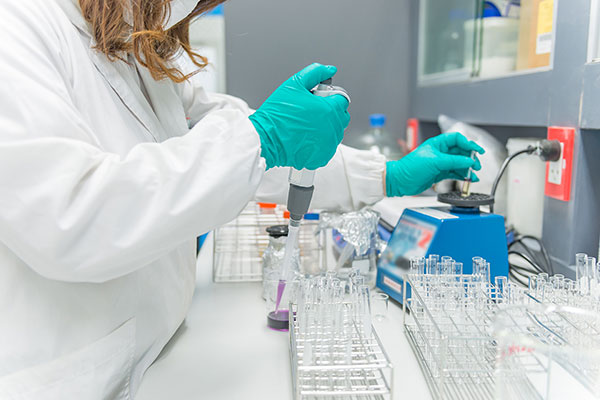Ion Fluorescent Probes
Customized Fluorescent Reagents
One-stop Solution for Your Research
BOC Sciences offers a one-stop solution for fluorescent reagents, providing custom synthesis, modification, and large-scale production services. Our comprehensive portfolio includes high-purity fluorescent dyes, probes, and labeling reagents for research and industrial applications, ensuring superior performance and reliability.
Explore More

Background
BOC Sciences is committed to providing customers with high-quality ion fluorescent probes.
Ionic fluorescent probe is a complete fluorescent probe composed of fluorescent group, linker group and recognition group, mainly divided into cationic and anionic fluorescent probe. According to the characteristics of the detected ions, the fluorescent probe has different receptor recognition groups, which can easily and quickly detect the existence of corresponding ions when fluorescence or fluorescence quenching occurs. It plays an important role in the field of medicine, catalysis, environmental science, life science and chemical process.
Classification of Ion Fluorescent Probes
Generally, ion fluorescence probes are mainly composed of anion probes and cation probes. According to their different charges, the probe properties are also different.
- Cationic fluorescent probe
The fluorescent molecular probe contains a group that recognizes cations, and the group contains atoms that act as electron donors to cations and fluorophores. The atoms are not only the electron donors in the push-pull electron system, but also the recognition group in the probe molecule. When the cation is combined with this kind of probe, because the cation has the effect of pulling electrons, It will reduce the electron supply capacity of the recognition group and make the absorption spectrum blue shift. This is due to the charge transfer caused by the light induced effect, so as to reduce the electron cloud density on the recognition group, weaken or disappear the interaction between metal ions and the recognition group, and make the fluorescence spectrum blue shift.
- Anion fluorescence probe
Compared with cation, anion has larger volume and weaker electrostatic effect ‚ Moreover, the diversity of ion geometry and structure makes the design and synthesis of anion fluorescence probe more complex. The recognition mechanism of anion probes mainly includes the following three types: hydrogen bonded or electrostatic bonded anion probes, and anion probes containing metal ions, ‚ Reactive anion probe. Among them, the anion probe based on hydrogen bond has the characteristics of simple synthesis steps, high sensitivity and low cost, so it is widely used in anion recognition. Among many anionic color probes, the probe based on hydrogen bond mechanism has the best color effect and is the most widely used. Compared with a single electrostatic interaction, the hydrogen bond has directionality, so that different ligands can recognize different anions according to their different spatial structures and hydrogen bond requirements. The color change of the chromogenic group of the anion chromogenic probe is due to the change of the relative energy with the orbit, which causes the red shift of the absorption spectrum.
Application of Ion Fluorescent Probes
Ions exist widely in nature, and some of them have very important functions in the process of life. Cation detection has become very important in chemistry, environmental science, biology, clinical diagnosis, medicine and other fields. Scientists have designed and developed a large number of ion fluorescence probes using different principles. Some can selectively recognize Li+, Na+, K+, Ca2+, Mg2+, Zn2+, Cu2+, etc. detecting the concentration of these cations has important biological significance and medical value, which is helpful to monitor and timely regulate many important physiological and cellular functions.
There are also a variety of probes to recognize anions. Hydrogen bond donors such as amide, urea, amino group and phenolic hydroxyl group have been widely used in the design and synthesis of anion receptors The supramolecular recognition system that bonds fluorescent groups to these receptors not only has selective anion recognition performance, but also has sensitive fluorescence response and sensing characteristics in the recognition process, which is important for the development of environmental anion pollutant monitoring based on anion recognition Sensitive fluorescent sensors for medical diagnosis and microanalysis of harmful anions are of great significance and broad application prospects.
Resources

- Hoechst Dyes: Definition, Structure, Mechanism and Applications
- Mastering the Spectrum: A Comprehensive Guide to Cy3 and Cy5 Dyes
- Fluorescent Probes: Definition, Structure, Types and Application
- Fluorescent Dyes: Definition, Mechanism, Types and Application
- Coumarin Dyes: Definition, Structure, Benefits, Synthesis and Uses
- Unlocking the Power of Fluorescence Imaging: A Comprehensive Guide
- Cell Imaging: Definitions, Systems, Protocols, Dyes, and Applications
- Lipid Staining: Definition, Principles, Methods, Dyes, and Uses
- Flow Cytometry: Definition, Principles, Protocols, Dyes, and Uses
- Nucleic Acid Staining: Definition, Principles, Dyes, Procedures, and Uses
Online Inquiry

